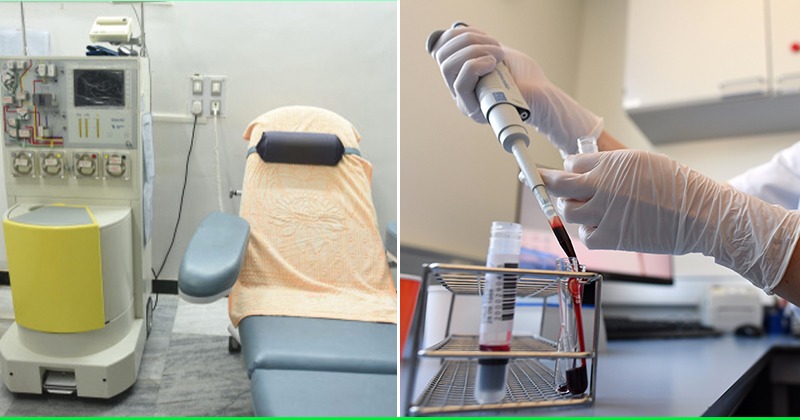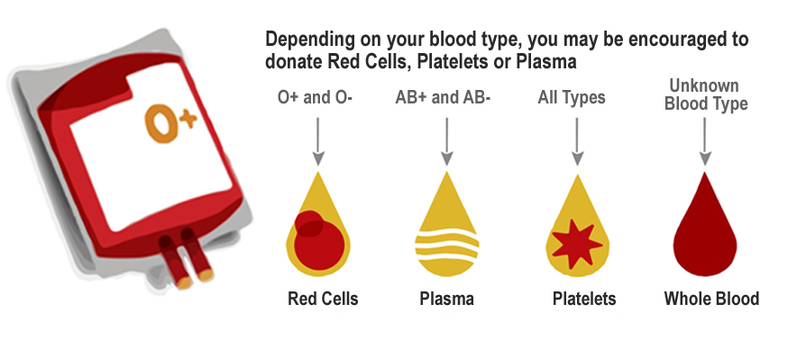What are good foods to eat before donating plasma?
Question: What can I do to get my heart rate lowered so I can donate plasma? Answer: If your heart rate is elevated because you're nervous about the donation process, practice some breathing exercises to help calm you down. Slow deep breath in for a count of 5-8 seconds, then slow breath out for 8-10 seconds.
How fast does plasma replace itself after you donate it?
Jul 06, 2021 · Staying Healthy After Your Plasma Donation. Take your time getting up. Eat a snack or light meal within two hours of your appointment. Continue to drink plenty of water. The American Red Cross recommends drinking an extra 4 cups in the 24 hours post-donation. Avoid alcohol for at least four hours ...
What to eat the day before donating plasma?
BEFORE YOUR PLASMA DONATION: Drink lots of water before donating on your plasma donation day Eat a healthy meal within two hours of your visit Avoid foods high in fat or cholesterol Don't use tobacco for an hour before donating Avoid alcohol and caffeine before and on your plasma donation day Avoid ...
Do I have to eat before donating plasma?
Payments for Donating Plasma. There is a fast and efficient payment system for plasma donation centers. Typically, the donor is given a rechargeable gift/credit card. Each time a plasma donation takes place, the card is uploaded to reflect the current payment. It is quite common for a new donor to receive an incentive, such as receiving approximately $1,000 in their first month.

How to Prepare for Your Plasma Donation
If you don’t know much about the process, plasma donation may seem a little intimidating. Don't worry. A quick and comfortable plasma donation experience is easy to achieve with a few simple health habits.
Staying Healthy After Your Plasma Donation
After your plasma donation, continue taking care of your health to minimize any side effects like fatigue or dehydration by following these simple tips:
Nutrition Tips for Regular Plasma Donors
If you're considering becoming a regular plasma donor, which means coming as often as twice per week, eating well is a must. Besides impacting your overall health, your diet will determine how likely you are to continue qualifying to donate plasma and how well you'll feel post-donation.
How to donate plasma?
BEFORE YOUR PLASMA DONATION: 1 Drink lots of water before donating on your plasma donation day 2 Eat a healthy meal within two hours of your visit 3 Avoid foods high in fat or cholesterol 4 Don't use tobacco for an hour before donating 5 Avoid alcohol and caffeine before and on your plasma donation day 6 Avoid strenuous exercise an hour before plasma donation 7 Get a good night's sleep before you donate
Does Grifols use plasma?
Grifols uses only plasma from healthy donors to make medicines that help save and improve lives. And proper health and nutrition can help make plasma donation faster and easier. Here are some things you can do to help you stay healthy before and after your donations – and every day:
How does plasma donation help?
Plasma donations help save lives and can put a little extra cash in your wallet. While many people experience very mild side effects, there are a few to consider, and you should consult with your doctor before your initial donation for their recommendation. Follow the proper health guidelines to ensure that you’re a good plasma donor candidate, and don’t worry if you’re turned away the first time. Many people can donate again after not being cleared the first time. Remember, your contribution can have a great impact on the health of others in your community.
What happens if you donate plasma?
Donating plasma can have side effects that are typically minor, but if it’s your first time donating, you may wish to have a ride home, just in case. Bruising and nerve irritation are among the most common, usually around the injection site. It may have mild swelling, which can be treated with cold packs. Nerve irritation causes immediate, intense pain at the injection site and can cause shooting pain down the arm and into the hand. If this happens, alert the technician — they’ll immediately remove the needle. This should eliminate the stabbing pain, although some mild discomfort may remain for a day or two afterward.
Why is plasma used in medicine?
Plasma is also used in labs to create medications to treat certain kinds of diseases, such as immune deficiency diseases and certain pulmonary illnesses like hereditary emphysema. The World Health Organization (WHO) considers plasma an essential part of medication.
What is plasma in blood?
Plasma is the liquid part of the blood that contains the elements necessary for blood clotting. Donating it is a more complicated process than donating blood. The blood is drawn from your arm, the components are separated, and the plasma is put into a separate bag. Then, the remaining blood components are inserted back into your arm.
How old do you have to be to donate plasma?
The requirements for donating plasma are fairly consistent. You must be at least 16 years old, weigh over 110 pounds, and have a valid ID. Do they drug test you before donating plasma?
What is plasma therapy?
Then, the remaining blood components are inserted back into your arm. For many chronic diseases, plasma therapy is one of the primary treatments. For example, people with clotting disorders such as hemophilia or bleeding disorders may need scheduled plasma transfusions.
What are the side effects of plasma donation?
Other possible side effects include sweating and paleness, weakness, sudden warmness, or nausea or vomiting. Dizziness and blurred or tunnel vision may also occur. More serious risks of donating plasma may be a drop in blood pressure, which can result in light-headedness or fainting.

Popular Posts:
- 1. how can you donate money and get tax credit for it
- 2. who can donate a liver for transplant
- 3. how can you donate hair
- 4. who can i donate my car to
- 5. where can i donate formula near me
- 6. where can i donate clothes plano tx
- 7. how to donate dog to the police to training
- 8. where can i donate used blankets near me
- 9. how long does hair have to he to donate
- 10. where to donate t shirts